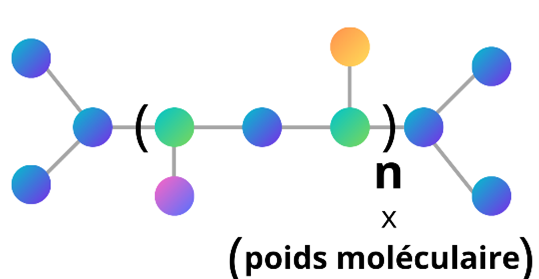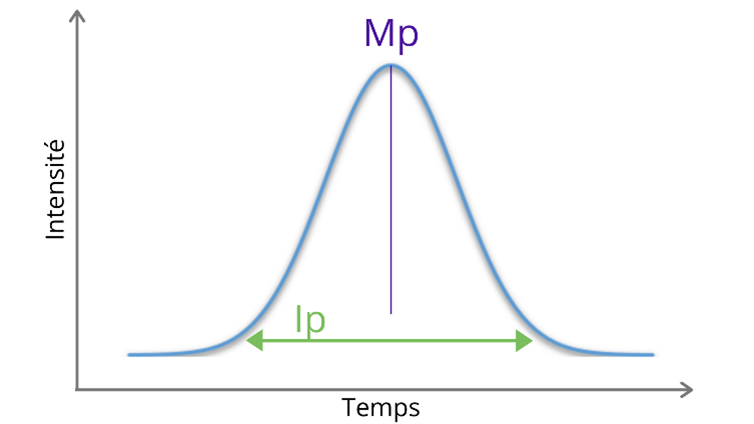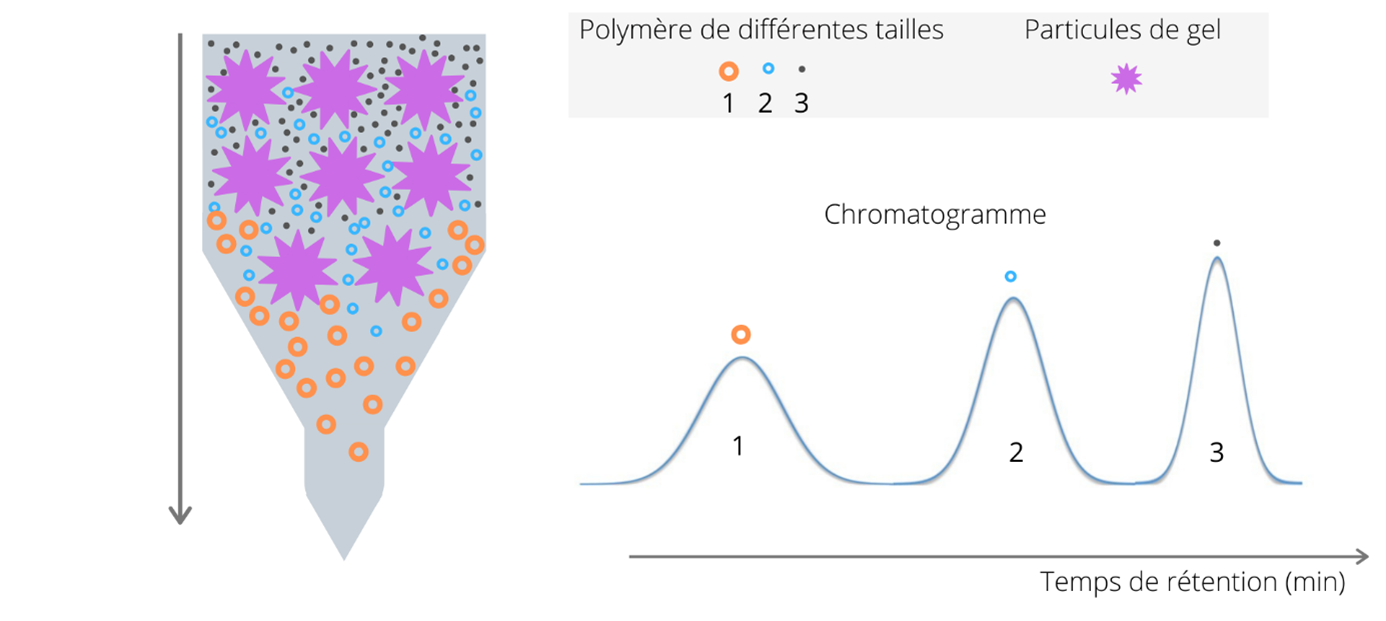In a previous article, “How to characterize the chemical nature of a polymer“, we discussed the different criteria to know to characterize a polymer.
Beyond the chemical nature, a polymer has a specific characteristic: an important molar mass. It is defined thanks to the following terms :
Note : a polymer is made of a distribution of chains of different lengths, we must speak of average molecular weight.

- Mn: Number average molar mass
The Mn is the weighted molar mass according to the number of monomer unit (n) contained in each chain.

- Mw: Weight average molar mass
The Mw is the weighted molar mass of each polymer chain.

- Mv: Mean viscosity molar mass
The Mv is the molar mass related to the intrinsic viscosity of polymers and therefore, thanks to the Mark-Houwink relation, to the true molar mass of a mono-disperse polymer.

- Mp: Molar mass at the peak
The Mp is the majority molar mass present in the sample
- Ip: Polydispersity index
The Ip defines the dispersion of molar masses in a sample. In the case of a peak, the polydispersity index is 1, in the case of a Gaussian, the index can be greater than 3. It corresponds to the ratio Mw/Mn.
Steric exclusion chromatography analysis is widely used by chemists to characterize polymer backbones. It allows to separate molecules according to their hydrodynamic volume. Indeed, the polymer chains, in solvent, are theoretically represented as spherical balls. The hydrodynamic volume corresponds to the volume of these balls.
The operating principle of a Steric Exclusion Chromatography (SEC or GPC), is based on the injection of polymers in solution in a permeable gel column. This column is composed of a three-dimensional organic network (gel) with a large porosity distribution. During the injection, the polymer and a mobile solvent are driven by a pump. Thus, under the effect of the pressure, the macromolecules cross the column. The polymers travel a more or less long path depending on their hydrodynamic volume. The small molecules that can pass through both large and small pores will be retained in the column. Their retention time will therefore be important. On the other hand, large polymers will not be able to penetrate the small pore size, and will be evacuated from the column more quickly. Their retention time will be low.

Simplified diagram of the principle of steric exclusion chromatography. The chromatogram represents the separation of three polymers of different sizes in solution. The molecules with the largest hydrodynamic volume (1) come first, followed by the smallest (2) and (3).
Once the column is crossed, the molecules will be counted thanks to various detectors :
- refractive index,
- ultraviolet,
- of mass,
- viscosimetric
- light scattering
Depending on the detector used, the operator will obtain a molar mass in polymer equivalent or a true molar mass.
Indeed, before carrying out the analysis of a sample, a calibration of the apparatus is necessary with polymers whose hydrodynamic volume, and consequently whose molar mass, are known. This calibration will provide a calibration curve, which will then be used to determine the molar mass.
Other techniques can be used to characterize polymers, if you have any questions, please contact us.

